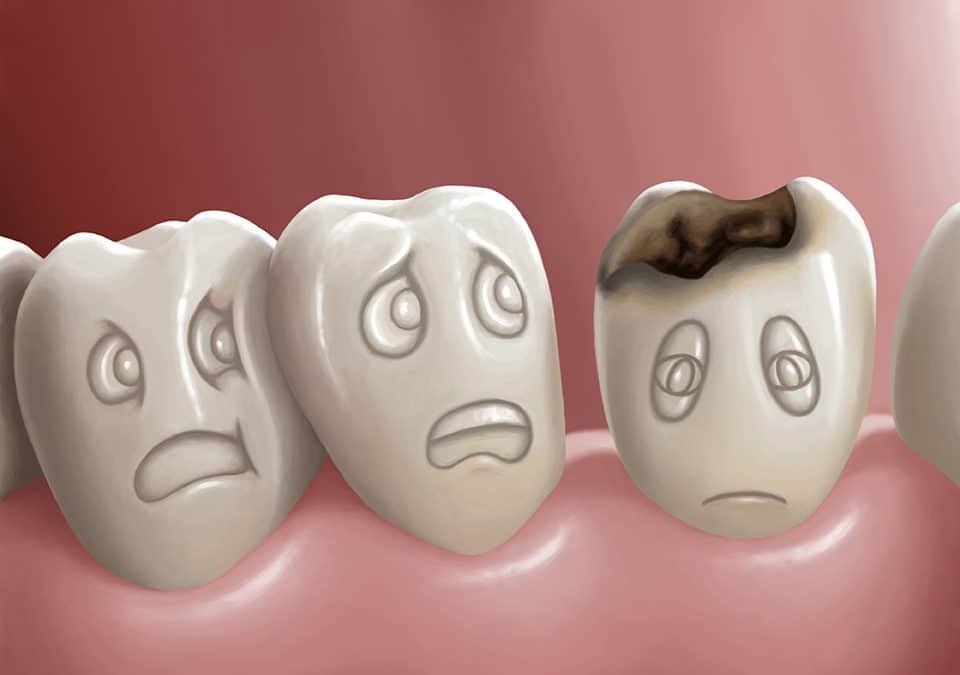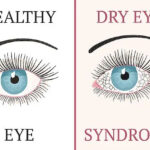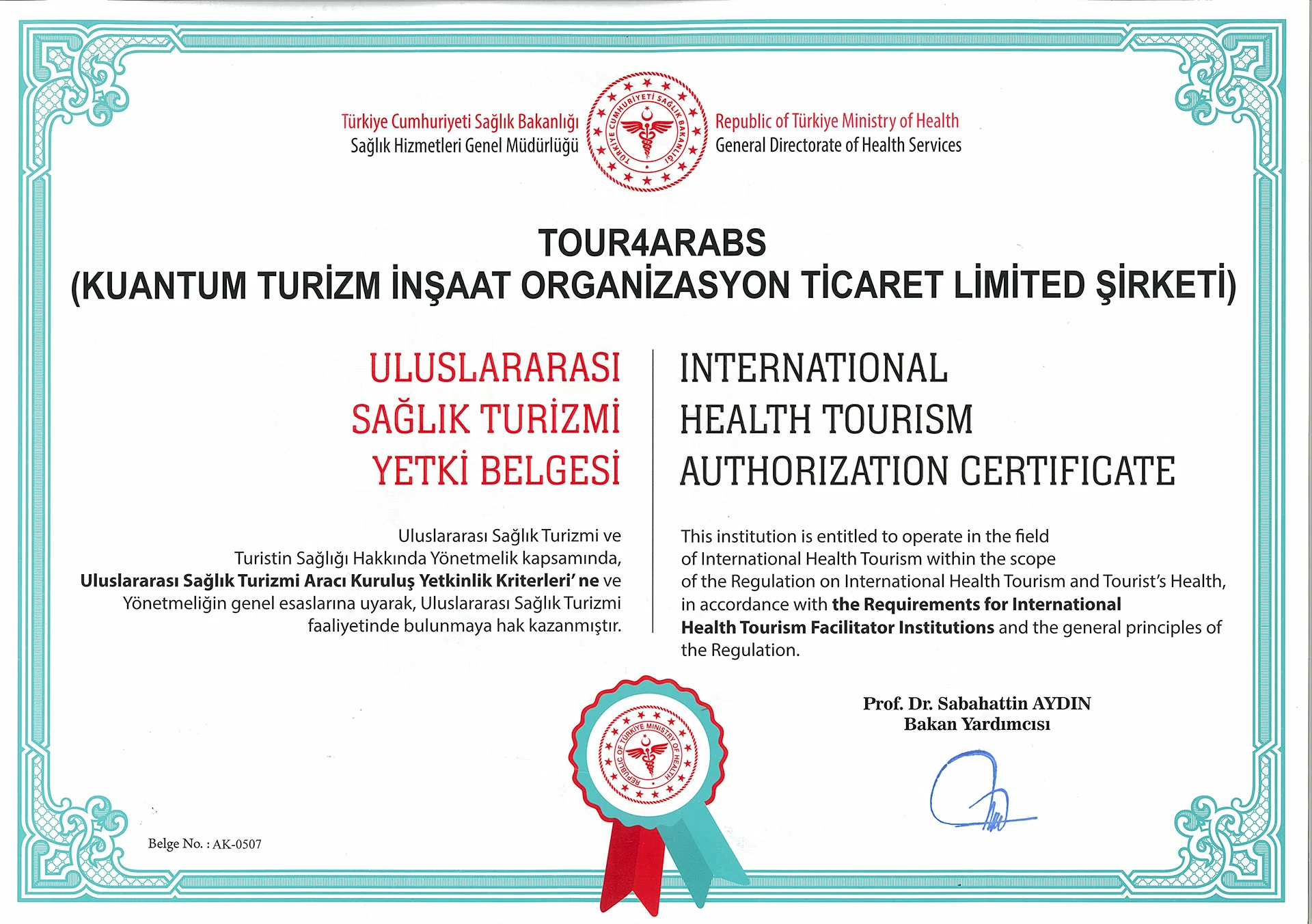What is Tooth Decay?
Tooth decay, in its simplest definition, is a hole formed in the tooth. Dental caries start in a very small size and over time, especially in cases where they are not treated, they increase and increase their width areas.
Because many cavities do not cause pain in the first place, it is almost impossible to detect and treat them early. The only way to get early dental caries treatment is to go to the dentist regularly.
According to various studies, dental caries is among the most common health problems in the world. Anyone with a tooth can have caries; This includes babies and animals.
What Causes Tooth Decay?
There are many different conditions for tooth decay to occur. Among the most common answers to the question of what causes tooth decay, it is possible to list the following:
- Plaque formation caused by bacteria, saliva, acid and food residues
- Excessive consumption of sugary and acidic foods and beverages
- Incorrect and incomplete oral care, inadequate brushing habits and not flossing
- Insufficient fluoride intake
- Dry mouth
- Eating disorders such as anorexia or bulimia
- Reflux disease, which causes stomach acid to weaken tooth enamel
What are the Symptoms of Tooth Decay?
Symptoms of decayed teeth; It may vary according to the location, size and depth of the decay in the tooth. If bruises and cavities are just beginning to appear, there may be no symptoms.
As the rot grows, the following symptoms may occur:
- Toothache that occurs without an obvious cause,
- Teeth are more sensitive than normal,
- Mild or sharp pain in the teeth while drinking sweet, hot, cold drinks or eating food,
- Visible holes or bruises in the teeth,
- Brown, black or white staining on any surface of the tooth,
- Pain when biting any food.
In addition to these symptoms, the progression of caries begins to cause bad breath. If dental caries is not treated on time, it is possible to reach the entire surface and root of the tooth. In such cases, it is too late for treatment.
How Is A Decayed Tooth Diagnosed?
In order to detect tooth decay, it is necessary to be examined by a dentist. Dentists primarily listen to the patient’s medical history. The answer to the questions of how long the toothaches and sensitivities last, how often and how severe they are, gives information about caries.
After this, physical imaging of the teeth is performed with special equipment. Mouth and teeth are examined with special medical tools. Sensitivity, holes, cavities and caries in the teeth can be detected by physical examination. However, it is not possible to detect caries in the roots of the teeth by physical examination. Dental X-rays are needed to view the roots and nerves of the teeth.
The purpose of X-rays is to view the nerves and tooth roots, and to examine the formation of caries in the roots or nerves. Using all these methods, the level of cavities, holes or bruises is determined. The appropriate treatment for the detected conditions is determined by the dentist. If the diagnosis and treatment is delayed, tooth loss is experienced.
What Are the Stages of Tooth Decay?
- First, a spot of different colors is observed on the tooth, brushing the teeth regularly with a fluoride-containing toothpaste and supporting cleaning with dental floss can prevent this spot from turning into caries.
- At this stage, the bruise becomes a cavity. If the hole observed is adequately cared for, it turns into caries that exceeds the hard surface layer of the tooth.
- The caries progresses and reaches the softer layer of the tooth, after which the growth of the carious layer accelerates. If the tooth decay has reached this stage, the dentist must take the tooth nerve before filling, and therefore disinfect the root canal and numb the tooth.
- It is absolutely necessary to fill the existing caries. If not, this tooth decay will create bigger problems as it will go deep into the tooth. In this case, the dentist may have to extract the tooth and replace it with a prosthesis.
What Are the Types of Tooth Decay?
When plaque is not removed with a regular oral care routine of daily brushing and flossing, your chances of developing cavities increase. Visit a dentist regularly to check your teeth for any problems, including cavities or signs of gum disease.
Not all cavities are the same, and your dentist can tell you what type of cavities you have after examining your teeth with dental instruments. He or she may also use x-rays to confirm the rotting areas.
The three types of caries are:
-
Root Rot:
This type of cavities is most common among older adults who are more likely to have receding gums. It occurs on the surface of the tooth roots.
-
Pit and Fissure Caries:
This type of caries occurs on the chewing surfaces of the posterior teeth. It can be prevented by proper brushing, but this type of caries can quickly worsen if you are not consistent with your oral hygiene.
-
Smooth Surface Caries:
This type of caries forms on the outer smooth surface of the teeth when bacteria are not cleaned and plaque builds up.
It is the mildest type and can be treated with fluoride. In addition, it is useful to know that regular and correct floss use can positively affect this type of caries.
Caries that tend to occur in fissures on the chewing surfaces of the posterior teeth are called occlusal caries. These cavities occur in the areas of the back teeth that you have difficulty in reaching while brushing; As a result, cavities in the teeth can collect bacteria that cause caries. These bacteria remaining on the teeth secrete acids that damage the tooth surface, and this process causes cavities.
Treatment of Decayed Tooth
Regular checkups can detect cavities and other dental diseases before they cause bothersome symptoms and cause more serious problems. The sooner you seek care, the better your chances of reversing the initial stages of tooth decay and preventing its progression. If a cavity is treated before it causes pain, you probably won’t need extensive treatment.
Treatment of bruises depends on how severe they are and your particular situation.
Treatment options include:
-
Fluoride Treatments:
If your decay has just begun, a fluoride treatment can help repair your tooth’s enamel and sometimes reverse a cavity in the very early stages. Professional fluoride treatments contain more fluoride than is found in tap water, toothpaste and mouthwash. Fluoride treatments can be liquid, gel, foam, or varnish that is rubbed onto your teeth or placed in a small tray that fits over your teeth.
-
Tooth Filling:
Fillings, also called restorations, are the main treatment option when decay progresses past the earliest stage.
Fillings are made from a variety of materials, such as tooth-colored composite resins, porcelain, or dental amalgam, which is a combination of several materials.
-
Crowns:
For extensive cavities or weakened teeth, you may need a crown, which is a specially fitted veneer to replace the entire natural lining of your tooth. Your dentist will drill through enough of all caries and the rest of your tooth to ensure a good fit. Crowns can be made of gold, high-strength porcelain, resin, metal or porcelain fused with other materials.
-
Root Canal Treatment:
Once the decay has reached the inner material (pulp) of your tooth, you may need a root canal. This is a treatment to repair and save a severely damaged or infected tooth rather than removing it. Diseased tooth pulp is removed. Sometimes medication is put into the root canal to clear the infection. It is then replaced by a filler.
-
Tooth Extraction:
Some teeth rot so severely that they cannot be repaired and must be removed. Extracting one tooth can leave a gap that allows your other teeth to slip. If possible, consider getting a bridge or dental implant to replace the missing tooth.
Dental Caries in Children
Tooth decay in children is just as common and common as it is in adults. Of course, one of the main causes of tooth decay in children is excessive consumption of foods such as milk, soda, grapes, sugar, fruit juice or bread. Children who consume sugar and starch-containing foods above the recommended amounts are much more likely to develop tooth decay. However, inadequate oral and dental care is among the factors that accelerate the formation of caries in the teeth.
Treatment of cavities in children can vary depending on your child’s symptoms, age, and overall health. However, it is important at this point how complicated the caries problem is.
After these determinations are made, while dental caries treatment is applied in children, one of the methods applied for adults is preferred; filling, root canal treatment or fluoride medication. The use of crowns is the last preferred option for children, but this treatment method can also be used if the severity of the condition worsens.
Tooth Decay in Pregnant Women
It is a fact that pregnant women should pay more attention to their oral and dental health than ever before. While poor oral care causes the mother to go through unnecessary treatment processes, it also poses a risk of harming the baby. This is why all possible precautions should be taken to avoid tooth decay during pregnancy. Despite everything, it is necessary to visit the dentist first when faced with tooth decay in any period of pregnancy. The physician determines the level of the caries and draws an action plan accordingly. If there is an initial level of caries and the mother’s pregnancy is nearing the end, it may be decided to postpone the caries treatment in such cases. On the other hand, if there is a caries that will get worse unless it is intervened, it may be preferable to apply a special dental caries treatment for pregnancy.
What are the Methods of Preventing Dental Caries?
The best treatment for tooth decay is to prevent it before it occurs. Good oral and dental hygiene prevents the formation of cavities and tooth decay. It is the most effective method to take the necessary hygienic measures before the appearance of decayed teeth. It is important to brush your teeth before going to bed at night and after breakfast. In addition, after consuming sugary and starchy foods, teeth should be brushed.
In addition, rinsing the mouth with mouthwashes containing fluoride is also a useful method. If brushing is not possible at the moment, gargling is an effective method.
Avoiding sugary and starchy foods helps maintain the structure of the teeth. Liquids such as acidic fruit juices can damage tooth enamel.
For this reason, tooth cleaning should be done carefully after the consumption of these foods. You should definitely visit the dentist at regular intervals. The dentist will ensure that the treatment of cavities that have occurred or may occur will be done quickly.
If you have tooth sensitivity and pain, you should make an appointment with your dentist as soon as possible. Thus, you can have healthier and well-groomed teeth and prevent tooth loss by having the necessary treatments done in the early period.






